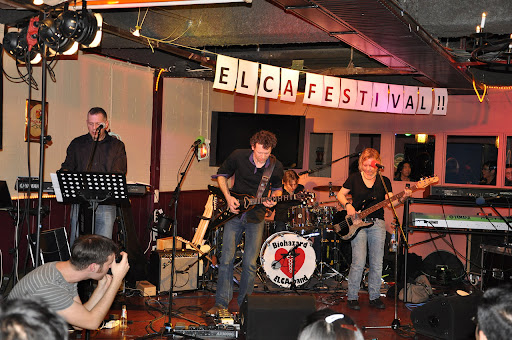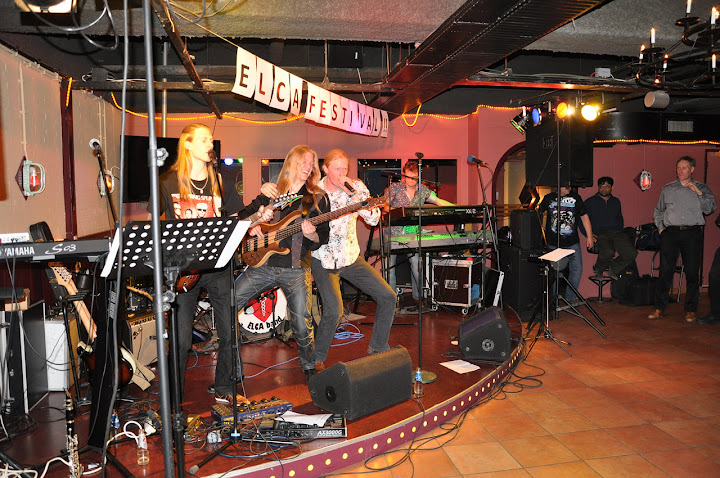Dear reader,
Though I have tried to be virtually present as much as possible, I am currently neither in Delft nor in my hometown Leiden. This also explains the late hour of this post. Where I am, it is currently a little over 6 pm. I am in Medford, a small forensic town near Boston, MA, USA. The main reason for being here is twofold. First, as Editor-in-Chief (EiC) of the IEEE Transactions on Circuits and Systems-I, I participated in the annual IEEE Panel of Editors (PoE) meeting. Second, I am here to give an invited talk at Tufts University in a seminar hosted by Prof. Sameer Sonkusale.
During the PoE meeting, we discussed a lot about good and not-so-good EiC practices, about upcoming changes to IEEE Xplore, about plagiarism (which, unfortunately, becomes more of a problem), about journal performance metrics, etc. The latter is also very important to you. That is, if you (plan to) make scientific, design and engineering contributions and you (plan to) present them in a journal or at a conference. And if they contribute to your reputation as a researcher, scientist, designer or scholar. For this, our busy chairs, heads and leaders, more and more resort to the only thing they understand about your work, being "the number"; more specifically, the Impact Factor (IF). I will not bother you with the exact definition of IF; many people do not even know and don’t care, your boss probably included, but it is generally considered to be a measure to express your importance, or the importance of your publications, or the importance of the journal that you publish your work in. Whereas it purely counts incoming citations without considering the significance of those citations.
 Since the algorithm for computing the impact factor is simple, it is also simple to manipulate. And this is exactly what is being done constantly, by authors, who for this reason include a lot of self-citations in their manuscripts, and by journals that impose a lot of self-citations (to the journal) on their authors. Since this is seriously blurring the reputation of people and journals, but also the minds of our evaluators, more objective figures-of-merit have been discussed, the most elegant one probably being the Article Influence. If you are interested you may wish to (and if you are a boss of a scholar or a scholar yourself, you probably should) check out http://www.eigenfactor.org/.
Since the algorithm for computing the impact factor is simple, it is also simple to manipulate. And this is exactly what is being done constantly, by authors, who for this reason include a lot of self-citations in their manuscripts, and by journals that impose a lot of self-citations (to the journal) on their authors. Since this is seriously blurring the reputation of people and journals, but also the minds of our evaluators, more objective figures-of-merit have been discussed, the most elegant one probably being the Article Influence. If you are interested you may wish to (and if you are a boss of a scholar or a scholar yourself, you probably should) check out http://www.eigenfactor.org/.
After the PoE meeting, I took off for a walk in and around the city center of Boston, called The Freedom Trail. See http://www.thefreedomtrail.org/. The Freedom Trail was recommended to me by Menno (as of now honorary member of the BME group) and, according to the web site, is "a 2.5 mile red-brick walking trail that leads you to 16 nationally significant historic sites, every one an authentic American treasure." And indeed it did. And I believe it also guides you through some of the most beautiful places in Boston. If you ever happen to be around, check it (and the Guinness from one of the Irish pubs) out!
Today I changed hotels and I am currently in Medford, where I will be staying for the coming two days, as tomorrow and the day thereafter I will meet various students, professors, heads and deans of Tufts University and give two presentations on Electronics for Wearable and Implantable Medical Devices, discuss possible opportunities for collaboration and discuss some latest research results that both Sameer Sonkusale’s group and the one of yours truly are working on.
So what about electrology, then? Well, today I went for a walk in the town of Medford and I came across a sign that advertises the services offered on 82 Forest St. Among them those of an Electrologist. So what does he or she do? Well, the sign reads on with the name of the therapist (which I will not disclose here) and the name of his shop: "Hair it go’s!" The service? Permanent Hair Removal. So if you ever wonder whether I may be getting bold, don’t you dare. Signing off with a famous phrase of Senad: "The things we do for science…."
Wouter

 Besides many research related posts on this weblog, there is another important aspect in universities: education. Currently the spring examinations take place. It is time to see if our efforts in introducing the students into the exciting world of transistors were good enough. Today I was supervising a retake of a first year BSc-course. In order not to get too bored, I printed out a bunch of papers to read through…
Besides many research related posts on this weblog, there is another important aspect in universities: education. Currently the spring examinations take place. It is time to see if our efforts in introducing the students into the exciting world of transistors were good enough. Today I was supervising a retake of a first year BSc-course. In order not to get too bored, I printed out a bunch of papers to read through… Still in shock by the post below? Don’t be. As always there’s hope on the horizon. The slides of the Hermes Partnership Workshop "Visions Towards ICT Supported Health" of last week have been posted online. If you want to find out more about one or more of the topics below, don’t hesitate to click
Still in shock by the post below? Don’t be. As always there’s hope on the horizon. The slides of the Hermes Partnership Workshop "Visions Towards ICT Supported Health" of last week have been posted online. If you want to find out more about one or more of the topics below, don’t hesitate to click  To make it a little more concrete for you; the population is graying all over the globe, not only in western Europe (as I initially thought), with some countries lagging only a little bit behind, such as those in Latin America, Africa and China; the latter catching up quite rapidly, by the way. Soon there will be more people that are either not yet working (as they are still in their nappies, at school, etc.), have retired already or are chronically ill than there will be people that participate in the work force.
To make it a little more concrete for you; the population is graying all over the globe, not only in western Europe (as I initially thought), with some countries lagging only a little bit behind, such as those in Latin America, Africa and China; the latter catching up quite rapidly, by the way. Soon there will be more people that are either not yet working (as they are still in their nappies, at school, etc.), have retired already or are chronically ill than there will be people that participate in the work force.  Don’t get me wrong here; this is still more exciting than an ordinary day at the shop. Marijn and Christos are making the final preparations on the uStim, our flexible neurostimulator, which soon will be tried out in vivo; Wannaya and June are working very hard on the circuit design and layout generation of the analog bionic ear; Marcel is working towards the completion of his PhD thesis and having the forms filled in to also publish it as a book — the first on Structured Design of EMI resilient analog circuits; Senad is wrapping up the simulations on a L2-optimized wavelet filter, to appear in a paper currently under review for prospective publication in IEEE Transactions on Circuits and Systems; Duan is designing a proof-of-principle experiment of the world’s first subsampling jitter-compensated software defined radio; Andre is trying to improve the efficiency of an RF energy harvester for a batteryless ultra lowpower radio; Yongjia is working hard on the circuit definition of an asynchronous level-crossing ADC for analog-to-digital conversion of non-stationary signals, such as ECG, EEG, ECoG, etc; Mark is thinking about how to combine an energy harvester with an ultra lowpower ultrawideband tag, but also a little about his exciting holiday ahead; the many MSc students are working hard on their MSc project and I am working hard on my invited presentation at the International Symposium on Medical Information and Communication Technology. If you want to have a glimpse of what I will be discussing there, check out the following movie/documentary of "
Don’t get me wrong here; this is still more exciting than an ordinary day at the shop. Marijn and Christos are making the final preparations on the uStim, our flexible neurostimulator, which soon will be tried out in vivo; Wannaya and June are working very hard on the circuit design and layout generation of the analog bionic ear; Marcel is working towards the completion of his PhD thesis and having the forms filled in to also publish it as a book — the first on Structured Design of EMI resilient analog circuits; Senad is wrapping up the simulations on a L2-optimized wavelet filter, to appear in a paper currently under review for prospective publication in IEEE Transactions on Circuits and Systems; Duan is designing a proof-of-principle experiment of the world’s first subsampling jitter-compensated software defined radio; Andre is trying to improve the efficiency of an RF energy harvester for a batteryless ultra lowpower radio; Yongjia is working hard on the circuit definition of an asynchronous level-crossing ADC for analog-to-digital conversion of non-stationary signals, such as ECG, EEG, ECoG, etc; Mark is thinking about how to combine an energy harvester with an ultra lowpower ultrawideband tag, but also a little about his exciting holiday ahead; the many MSc students are working hard on their MSc project and I am working hard on my invited presentation at the International Symposium on Medical Information and Communication Technology. If you want to have a glimpse of what I will be discussing there, check out the following movie/documentary of "










 So why the title of this blog then? Well, I was reading the thread at
So why the title of this blog then? Well, I was reading the thread at  While enjoying lunch, the Biomedical Electronics Group gathered in the Davidse room (named after the former head of the Electronics Research Lab and also my "promotor", Jan Davidse) to listen to three presentations. The first one was by Duan Zhao, on an interesting new way of bridging the gap to low-power software radios by means of subsampling. After an introduction on the operation of a subsampling receiver, he explained to us a technique to remove the jitter originating from the sampling clock by using a harmonically related reference. Currently Duan is working hard on a manuscript to be submitted to GlobeCom.
While enjoying lunch, the Biomedical Electronics Group gathered in the Davidse room (named after the former head of the Electronics Research Lab and also my "promotor", Jan Davidse) to listen to three presentations. The first one was by Duan Zhao, on an interesting new way of bridging the gap to low-power software radios by means of subsampling. After an introduction on the operation of a subsampling receiver, he explained to us a technique to remove the jitter originating from the sampling clock by using a harmonically related reference. Currently Duan is working hard on a manuscript to be submitted to GlobeCom. 